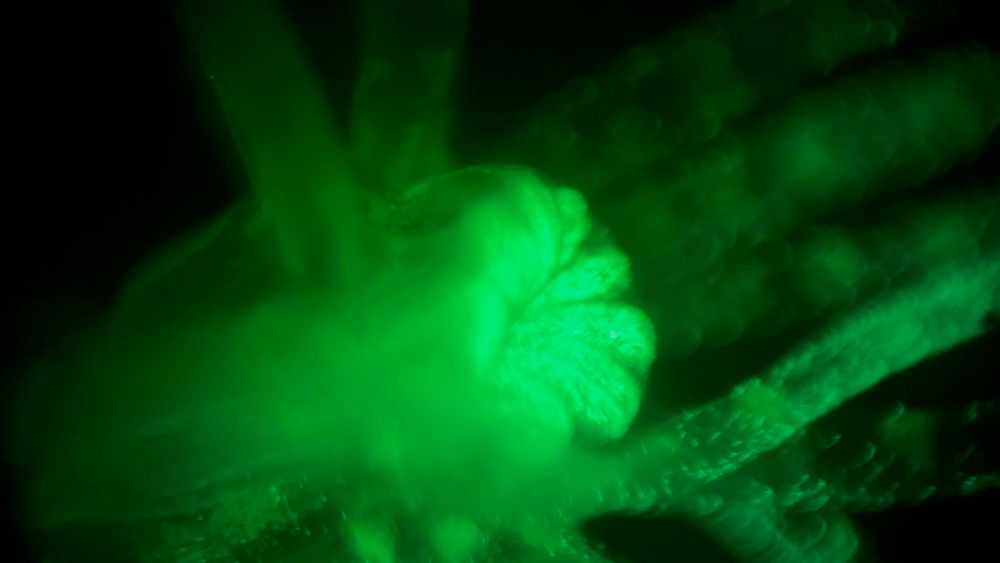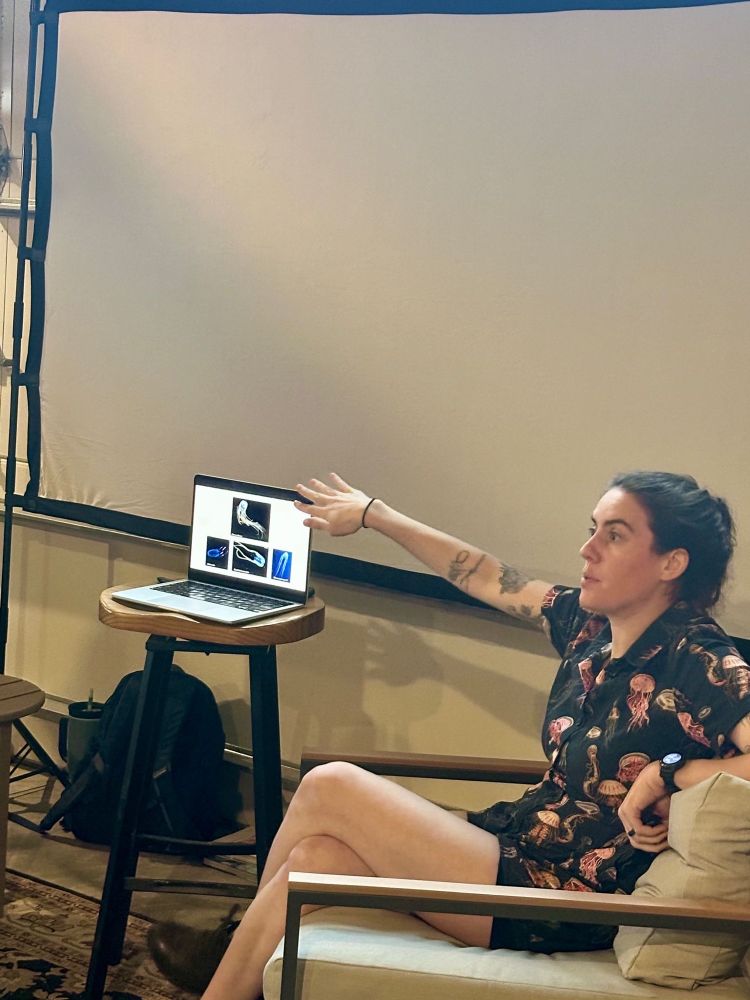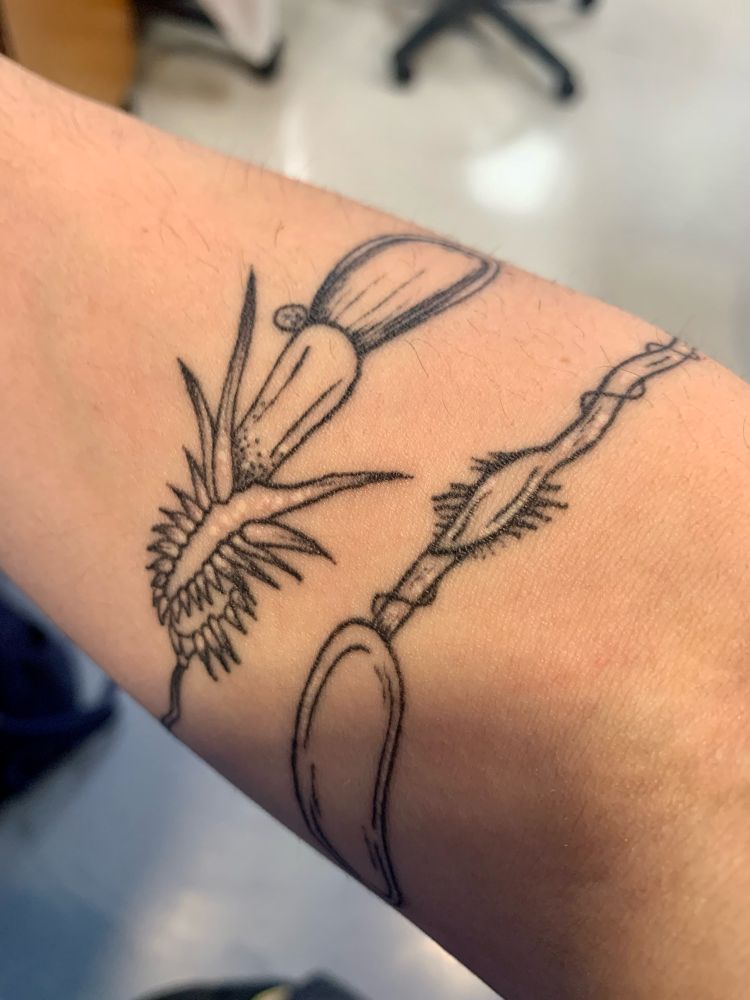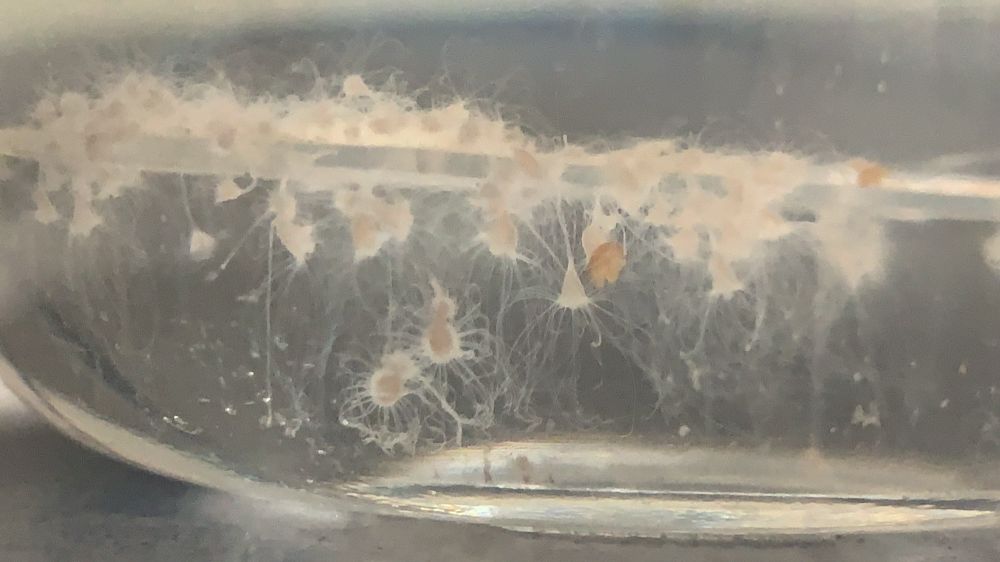
http://annaklompen.com/
🪼🪼🪼
Opinions my own.
🧪🪼🧪

🧪🪼🧪
🪼🧪🪼
#Hype4Hydrozoa
@stowersinstitute.bsky.social
@sicb-diz.bsky.social
🪼🧪🪼
#Hype4Hydrozoa
@stowersinstitute.bsky.social
@sicb-diz.bsky.social
📷 Transgenic Nematostella where green marks developing and mature stinging cells, which are densely packed around the mouth.
🪸🧪🪸
#StunningStella #ToxinTuesday @stowersinstitute.bsky.social

📷 Transgenic Nematostella where green marks developing and mature stinging cells, which are densely packed around the mouth.
🪸🧪🪸
#StunningStella #ToxinTuesday @stowersinstitute.bsky.social
#StunningStella
@stowersinstitute.bsky.social
#StunningStella
@stowersinstitute.bsky.social
#Hype4Hydrozoa #StunningStella
@stowersinstitute.bsky.social



#Hype4Hydrozoa #StunningStella
@stowersinstitute.bsky.social
I research jellyfish venom systems, and my graduate work was on colonial hydroids that live on hermit crabs.
#Hype4Hydrozoa #SciArt




I research jellyfish venom systems, and my graduate work was on colonial hydroids that live on hermit crabs.
#Hype4Hydrozoa #SciArt
🪼🧪🪼
🪼🧪🪼
These jellies grow rapidly, but will likely only live a year or two. Their polyps, however, can live for many years even after producing young jellies.
🪼🧪🪼
These jellies grow rapidly, but will likely only live a year or two. Their polyps, however, can live for many years even after producing young jellies.
🪼🧪🪼
#Hype4Hydrozoa
🪼🧪🪼


#Hype4Hydrozoa
🪼🧪🪼

Older medusae like this one tend to have green algae growing on their bell. Polyp remains unknown.
#Hype4Hydrozoa
🪼🧪🪼
Older medusae like this one tend to have green algae growing on their bell. Polyp remains unknown.
#Hype4Hydrozoa
🪼🧪🪼



Not so! The polyp stage also contains stinging cells, which house the venom-filled structures that give jellies their sting.
🎥 Sanderia (Amakusa jellyfish) polyps on slide.
🧪🪼🧪
#MedusozoaMadness #ToxinTuesday

Not so! The polyp stage also contains stinging cells, which house the venom-filled structures that give jellies their sting.
🎥 Sanderia (Amakusa jellyfish) polyps on slide.
🧪🪼🧪
#MedusozoaMadness #ToxinTuesday
Two hunting styles may be better than one!
📷 Red Eye Jelly at Friday Harbor Labs
🧪🪼🧪

Two hunting styles may be better than one!
📷 Red Eye Jelly at Friday Harbor Labs
🧪🪼🧪
Lion’s Mane Jellyfish (genus Cyanea): 3m bell diameter, 30+ m long tentacles!
📷 Washed up “small” Lion’s mane along rocky intertidal, with my boot for size.
🪼🧪🪼
#MedusozoaMadness

Lion’s Mane Jellyfish (genus Cyanea): 3m bell diameter, 30+ m long tentacles!
📷 Washed up “small” Lion’s mane along rocky intertidal, with my boot for size.
🪼🧪🪼
#MedusozoaMadness
Box jellies: ~50 species
Stalked jellies: ~50 species
If you know me I am always #Hype4Hydrozoa, and lucky me Hydrozoa or “water animals” includes over 3500 species to get excited about, spanning from freshwater to the deep ocean!
🧪🪼🧪
#MedusozoaMadness

Box jellies: ~50 species
Stalked jellies: ~50 species
If you know me I am always #Hype4Hydrozoa, and lucky me Hydrozoa or “water animals” includes over 3500 species to get excited about, spanning from freshwater to the deep ocean!
🧪🪼🧪
#MedusozoaMadness
Staurozoa includes ~50 species that have similar structures as a “typical” swimming medusa, but instead these stauromedusae attach to substrate like algae or rocks!
📷 Stalked jellyfish at Friday Harbor Labs
🧪🪼🧪
#MedusozoaMadness

Staurozoa includes ~50 species that have similar structures as a “typical” swimming medusa, but instead these stauromedusae attach to substrate like algae or rocks!
📷 Stalked jellyfish at Friday Harbor Labs
🧪🪼🧪
#MedusozoaMadness
In more ways than one! Cubozoans or box jellies have cube-shaped bells and 1 or more tentacles at each of the four “corners”. Some species are known for having complex eyes, fast swimming speeds, or potent venoms!
🧪🪼🧪
#MedusozoaMadness
#ToxinTuesday

In more ways than one! Cubozoans or box jellies have cube-shaped bells and 1 or more tentacles at each of the four “corners”. Some species are known for having complex eyes, fast swimming speeds, or potent venoms!
🧪🪼🧪
#MedusozoaMadness
#ToxinTuesday
Scyphozoa may be called true jellies since they often grow into larger jellyfish (easier to see!) in marine habitats across the world. There are ~200 described species such as moons, sea nettles, upside-downs, and egg yolk jellies!
🧪🪼🧪
#MedusozoaMadness

Scyphozoa may be called true jellies since they often grow into larger jellyfish (easier to see!) in marine habitats across the world. There are ~200 described species such as moons, sea nettles, upside-downs, and egg yolk jellies!
🧪🪼🧪
#MedusozoaMadness
• Scyphozoa (“true” jellies)
• Cubozoa (box jellies)
• Staurozoa (stalked jellies)
• Hydrozoa (water animals)
Jellyfish are found across these groups, but in some cases the jellyfish stage has been highly modified or even lost!
#MedusozoaMadness
🧪🪼🧪

• Scyphozoa (“true” jellies)
• Cubozoa (box jellies)
• Staurozoa (stalked jellies)
• Hydrozoa (water animals)
Jellyfish are found across these groups, but in some cases the jellyfish stage has been highly modified or even lost!
#MedusozoaMadness
🧪🪼🧪
Medusa = jellyfish, or the swimming life stage present in the lineages of Medusozoa, a subphylum in Cnidaria! The jellyfish stage (typically) proceeds after the benthic polyp stage.
📷 Sanderia polyps and young jellies (ephyrae)!
#MedusozoaMadness
🧪🪼🧪

Medusa = jellyfish, or the swimming life stage present in the lineages of Medusozoa, a subphylum in Cnidaria! The jellyfish stage (typically) proceeds after the benthic polyp stage.
📷 Sanderia polyps and young jellies (ephyrae)!
#MedusozoaMadness
🧪🪼🧪
These moon jellies are just a few months old, but have grown fast on a steady diet of brine shrimp (Artemia sp.) or “sea monkeys.” You can see this jelly’s last meal still inside!
📷: Moon jellyfish (Aurelia coerulea), raised in @pcart.bsky.social lab.
🧪🪼🧪


These moon jellies are just a few months old, but have grown fast on a steady diet of brine shrimp (Artemia sp.) or “sea monkeys.” You can see this jelly’s last meal still inside!
📷: Moon jellyfish (Aurelia coerulea), raised in @pcart.bsky.social lab.
🧪🪼🧪
📷 Hermit crab with Hydractinia colony on shell. PC: Me

📷 Hermit crab with Hydractinia colony on shell. PC: Me
🪼🧪🪼




🪼🧪🪼

